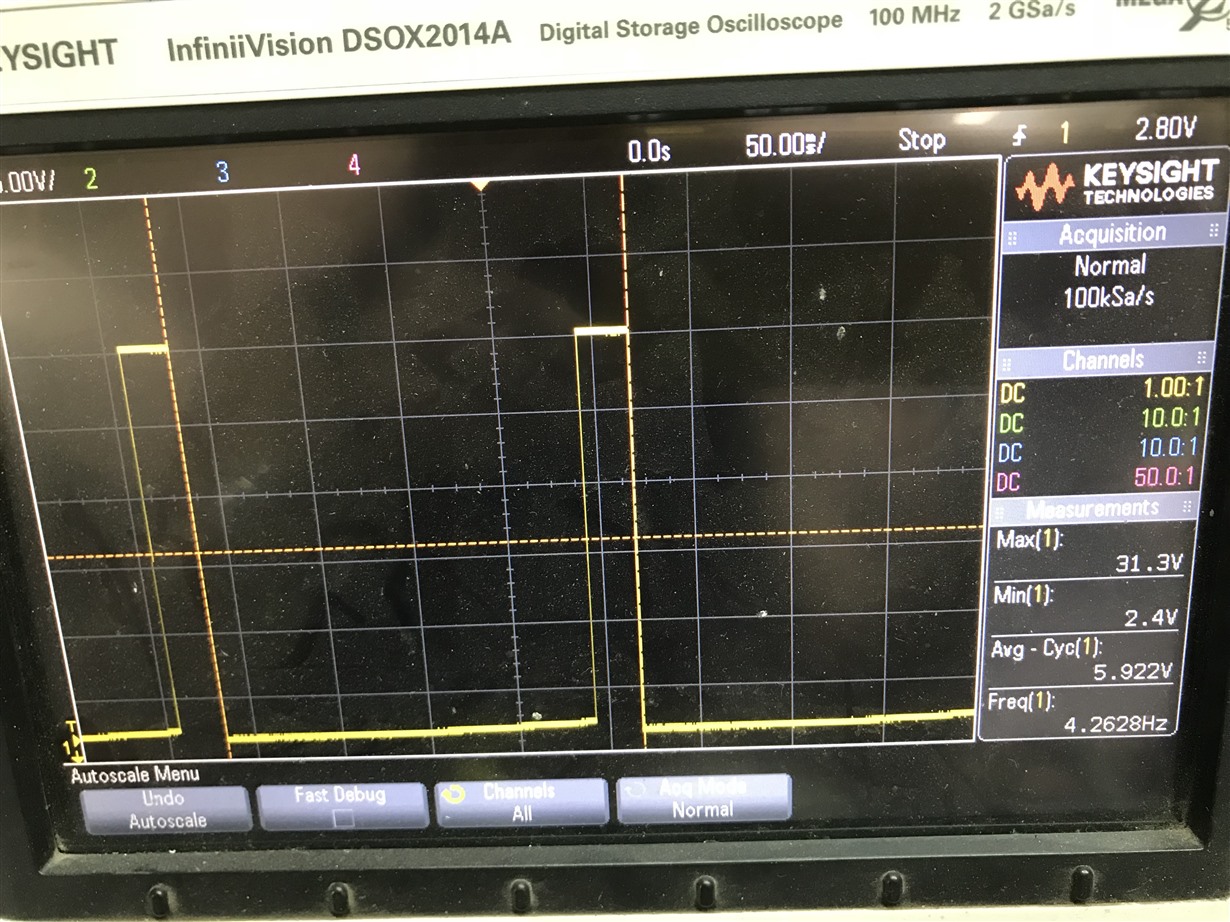Hello,
I have designed a 120W flyback by referring to the design document of tidu412a.
Link: http://www.ti.com/lit/ug/tidu412a/tidu412a.pdf
My design specifications are :
Input:300V to 900V
Output: 24V, upto 5A
Transformer number of turns: Primary/secondary/auxiliary 176/16/11
Airgap: 3mm
With the current design, I am getting the output of only 1.76V at no load with an input of 350V.
I am not able to understand what is wrong. My IC is not giving output PWM at DRV pin. The voltage at VDD pin is going above 21V and suddenly decreasing to 8V
and this continues, means, my IC is not starting. I tried replacing the IC, that didn't help. Please suggest what next to do. The schematic file is attached.
The related waveforms are given below. (The probe has a multiplier of 10, means please multiply 10 the voltage values shown in the waveform images)
HV pin waveform:
CS Pin Waveform:
VDD Pin waveform:
VS Pin Waveform
DRV Pin:
Please help me out .....







